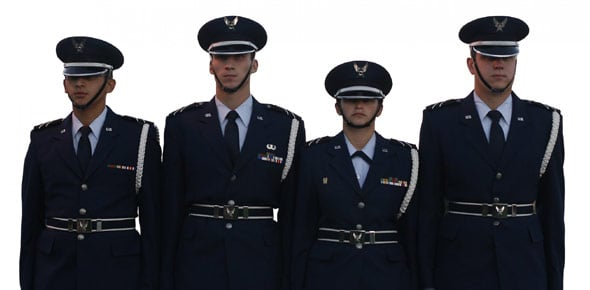Which method of movement gives you the lowest silhouette?
What is the most important thing to look for when inspecting your...
What advantage is gained by performing a rapid, violent assault?
After entering a room, which enemy threat is engaged first?
You would use precision room clearing techniques when
Which color, found on a map, represents man-made features?
Before entering a building through a window or door that was created...
To avoid injury and circuit damage, what should you always do before...
On a map, what is represented by a solid blue line with a thin black...
Most convoy planning is based on unit
Plotting a six-digit coordinate will get you within how many meters of...
Why would a leader issue a fragmentary order?
If a map shows contour lines on the opposite side of a hill so close...
What are the two types of withdrawals?
What is often needed to defeat barriers that are more elaborate or to...
When moving parallel to a building during an urban operation, how...
When writing paragraph 2 - mission in the op order, how often do you...
Before attempting to maneuver, when employing fire and maneuver...
When hardening vehicles using sandbags, as an additional precaution,...
Which ambush uses limiting stakes to prevent friendly fires from...
Which of the following is not a type of reconnaissance patrol?
Why do squads use formations?
Normally, how does a team withdraw from an ambush site?
Which S -function gathers intelligence for air base defense force...
How often should you conduct visual inspections of individual...
What civilian law enforement agent will be included in any off -base...
Which major terrain feature is a dip or low point between two areas of...
Which movement technique requires a great deal of patience?
The basic formations for the fire team is the
A short, continuous sloping line of higher ground, normally jutting...
While a convoy is moving on a controlled route, where will the start...
In land navigation, which north is your staring point or baseline?
The S-4 is normally responsible for completing which paragraph of the...
When performing building clearing, what must squad and fire team...
Which term is best to use when arranging a general off-base nuclear...
Which of the following statement concerning the reconnaissance in...
What is the convoy driver's sector of observation?
In paragraph 3 - execution of the op order, how should you write the...
Which squad formation provides maximum firepower to the front?
You and your squad have come across a small open area to cross. You...
A deliberate ambush is conducted when your team
What does a delay in an economy-of-force operation create to allow...
If you are acting out the actions that will occur during a mission...
Attacks on a position or installation followed by a plan withdrawal,...
A collective action executed by a flight or smaller element without...
In reference to convoy communications, what is the frequency...
Which S-function is responsible for personnel management and...
The base CC form the base defense operations center with
Before initiation of a nuclear weapons movement, the convoy CC is...
How do you convert a grid azimuth to a magnetic azimuth?
Which formation is used to prevent third party traffic interference...
Which is not a method of disengaging from the enemy?
Which installation methods are the easiest to maintain and provide the...
What info on a map is much like th instruction book that comes with a...
Which element or team of the combat patrol provides direct fire...
Which presentation show the control measures and key terrain in...
When cleaning communications equipment, what should you use to dust...
What clearing task involves seizing control of the room with the...
Which type of reconnaissance patrol is performed to obtain information...
In fire and maneuver operations, from where does most of the...
What is the response time of a back-up force supporting ground...
At squad level, which teams normally provide flank security as well as...
Producing combat ready units that respond to known or suspected enemy...
It there is any return fire once the assault element begins to search,...
Which principle of precision room clearing is the key to a successful...
Who is the chief of the BDOC?
The CIS is responsible for all plans, estimates, reports, and requests...
A collective action that a crew of a weapons system or a piece of...
What is EEI?
Who is responsible for the mechanical condition of the convoy...
When contact is possible, what movement technique should you choose...
Which bounding method is easier to control?
Which movement techniques are combined to cross an area so large the...
Which convoy drill is used for small to medium vehicles and not a...
What are the two other grid systems that are used as the bases for the...
When conducting a general on-base nuclear weapon movement, which of...
When leading a reconnaissance patrol, what technique positions...
What is an azimith?
For planning purposes, what is the range for field wire circuits using...
Which of the following is not one of the three types of contour lines...
Which paragraph in the op order addresses service and support, as...
In which paragraph of the op order is the mechanics of the operations...
When interviewing experts individually or as a group, you should ask...
An authentication system is designed to protect a communications...
Which operational step in the vulnerability/criticality analyses is...
The purpose of the communication security protective measures is...
















